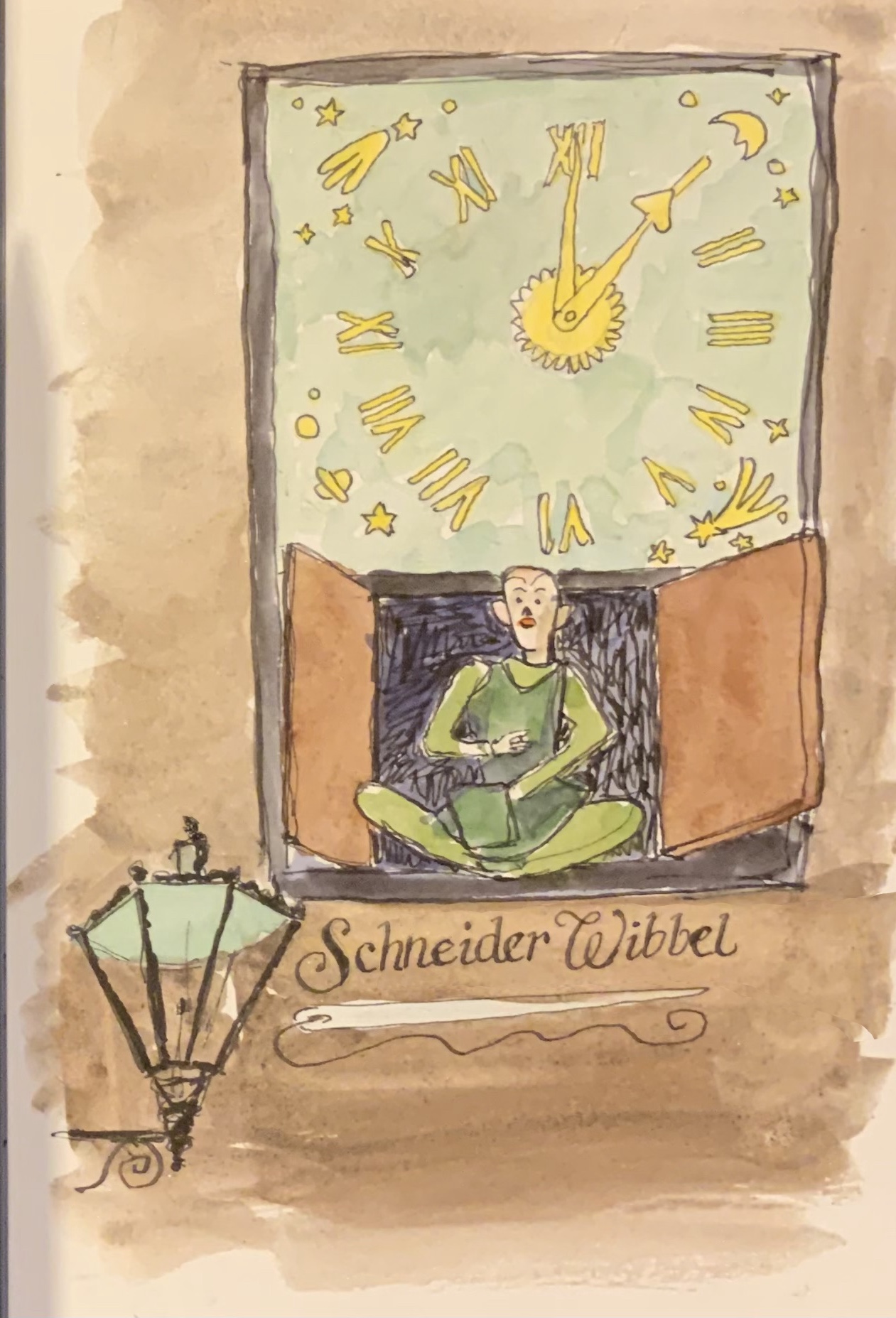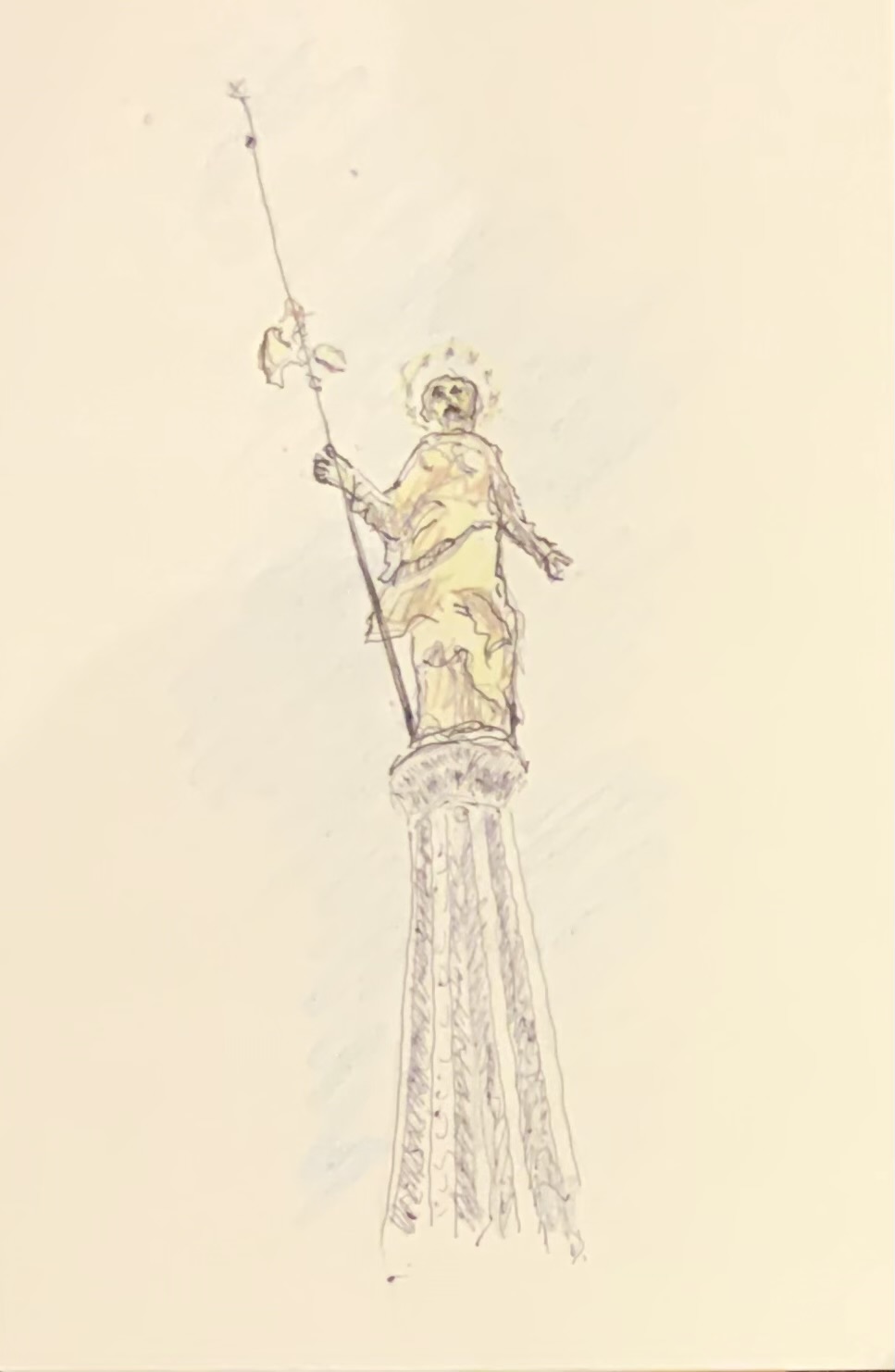Saturday May 11, about 6:00 PM
Milan Sunny and mild
This is our fourth day in Milan, and while the rest of the Tauck passengers have left, we’ve spent the day enjoying a walk about town—the art district, Eataly . . . And sitting in our hotel room, having enjoyed our stash from Eataly—wine, bread, olives, coldcuts, Gorgonzola dolce— I’m thinking about Düsseldorf.
Why, you may ask. It’s because Düsseldorf has the temerity to compare itself to Milan. And again, Why? Beats me. The charms of Düsseldorf are lost on Mary and me. It styles itself as the Milan of Northern Europe, and we think that’s laughable.
To be fair, this is based solely on one, single tour of the city, and on a dreary, rainy and cold day. We didn’t see any evidence of style or modernity. Nothing I would call cool. But I’ll give you a full rundown of our visit and you be the judge. I’m willing to be proven wrong.
Our small group of travelers met our guide on a sycamore-lined promenade along the Rhine; a cheerful, personable old fellow. He took us on a walk through the center of the city, pointing out various landmarks and their historical significance: • the Catholic church tucked away behind some street-facing buildings, because the Protestant lord of the area didn’t want to see them out in the open; • “stumble stones,” the bronze insets into the cobblestone sidewalks that commemorate Jews who had been dragged off to concentration camps; • a Baroque-looking sculpture of darkened bronze signifying the struggle of State vs. Church during the Reformation; and various less-significant ones.
On showing us the stumble stones our guide did talk about how, when he was a kid, the subject of the Holocaust was totally missing from school curriculum. And while his father would tell him about his part in WWII, his mother refused to talk about that period of German history.
We were also treated to a glass of beer and some snacks at a Bierstube. Our guide explained the strict rules of this institution in this part of Germany. First of all, it’s a brewery. They serve their beer, and perhaps lemonade. It comes from a wooden keg, not pumped up from some pressurized tank. This is a place for men to come have a pint and relax. Women were tolerated only in recent years. Waiters wear a specific uniform of sorts: white shirt, black slacks, blue apron. They walked through the place with trays of glasses filled with beer, not big mugs like in Bavaria. Here they don’t like the beer to go flat. If you empty a glass of beer, he automatically puts down another one, unasked. If you don’t want another, you put your coaster on top of the last glass. You pay based on the number of empty glasses.
You can get beer to go. Take a pitcher to “the confessional” to have it filled, or send your kid to do this for you, but don’t complain if the beer seems a little weak when he brings it to you.
So many rules! Some of our group didn’t drink beer. The staff was aghast when they asked for a Diet Coke. They were given the option of a “lemonade” made with elderberry. We were all treated to good rye bread with a slab of Dutch cheese, a slice of onion, and mustard.
Speaking of mustard, our guide took us to the tourism office where you could purchase a selection of the town’s beers, mostly called “Alt.” There we were each given a little jar of local mustard with different flavors, coconut curry, fig, or chili, and a tiny bottle of the local schnapps.
One of the places of pride that we were shown was the storied Tailors’ Street. Our guide timed it to be there precisely at 1:00 PM, when a sort of calliope started playing and a figure of Wibble the Tailor popped out of a large clock set into the wall, sort of like a cuckoo clock. Like almost everyone in the world, they’re proud of their traditions. Here’s a quick sketch of Schneider Wibble.

Düsseldorf just seems to be stuck looking at the past.
Well, the people of Milan are proud of their past, too, and not just Leonardo’s Last Supper. On the tip of the highest tower of their cathedral stands the Madonnina, a golden statue of Mary that guards the city. Nothing was to be built higher than the Madonnina, that is until after WWII, when modern skyscrapers were erected at the edge of town. This was scandalous, but problem solved when each and every one of them placed a Madonnina at its highest point. And I humbly provide a quick sketch of her, as well.

Perhaps I shouldn’t be so judgmental of the German city. I’m typing these notes in blog, but also writing them in a paper journal that is, no joke, hide-bound.
